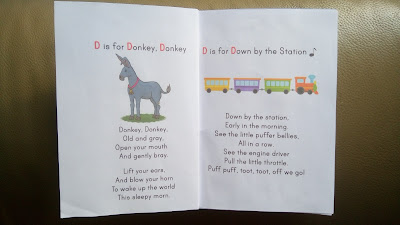"The Theory of Loose Parts" was credited to Simon Nicholson, an architect, who in in 1971 wrote an article entitled "How not to cheat children: The Theory of Loose Parts." According to Nicholson, "In any environment, both the degree of inventiveness and creativity, and the possibility of discovery, are directly proportional to the number and kind of variables in it." In other words, when children are presented with a wide range of materials that have no defined purpose, they will be more inventive in their play and would manipulate and use the materials in as many ways as their imagination can devise.
So what exactly are 'loose parts'? Loose parts are open-ended materials that can be moved, carried, combined, redesigned, lined up, taken apart and put back together in multiple ways. They can be used alone or combined with other materials. Loose parts can be:
- recycled or upcycled materials, such as cardboard boxes, cardboard tubes, plastic bottles, bottle caps and egg cartons.
- found in nature, such as leaves, flowers, seed pods, sticks, pebbles, seashells and rocks.
- store-bought, such as drinking straws, craft sticks, pom-poms, pipe cleaners, marbles, beads and buttons.
Here are pictures of some of the loose parts I have collected for use in our home preschool:
In the above picture, there are seashells, rocks, transparent glass gems, marbles, buttons, beads, decorative toothpicks, cotton buds, pom-poms, craft sticks, wooden pegs, wooden blocks and discs, coloured shape blocks, pipe cleaners, disposable chopsticks, drinking straws, googly eyes and yarn.
The picture above shows loose parts collected from recyclable items. There are Styrofoam pieces, bubble wrap, aluminium cans, empty plastic containers, cardboard tubes, bottle caps, cork, egg carton and fabric scraps.
Loose parts offer infinite play possibilities. They invite children to use their imagination to create, design, construct, experiment, and explore various ways of making things or inventing play. It is spontaneous and has no specific set of instructions; outcomes will vary from child to child. In fact, depending on the interests of the child and stage of development the child is at, the same loose parts will be used differently at various points. This means loose parts will continually engage children as they move to higher levels of play according to their maturity levels.
I would like to share one of my very first encounters with the outcome of introducing loose parts play to David. I had been collecting bottle caps for some time. One day, he saw the bag of bottle caps that I have and asked to play with them. I gave him the bottle caps and went on to do something else. After some time he came to me and said,"Mummy, see... I made a fan." I looked at what he was pointing at and was a bit taken aback.
Can you see the similarity? I have since learned not to underestimate what children can do when they are presented with loose parts to play.
For children who are accustomed to playing with 'fixed toys' and electronic devices, it may take a while for them to take to loose parts. Children who are exposed to large chinks of TV and i-Pad time are especially less inclined to want to exchange the visual stimulation they can get for such humble play that requires them to think and use their hands. If this describes your child, don't give up on loose parts play just yet. Try introducing this type of play regularly and show interest in what they are doing to encourage them. Children are curious and creative by nature. Let us be more intentional in what we present to our children for play so as to help them exercise their creativity, something that the Lord has given to mankind, his image-bearers. I will write more about how loose parts play can be incorporated in the home in future posts, God willing.
For more information and ideas on loose parts play, you may wish to follow my 'Loose Parts Play' board on Pinterest:














































